APT’s new luxury Douro cruise ship MS Estrela: What to expect
The best thing about this UNESCO World Heritage-listed part of Europe is that you can cruise through it, perfect for sampling wine and port.
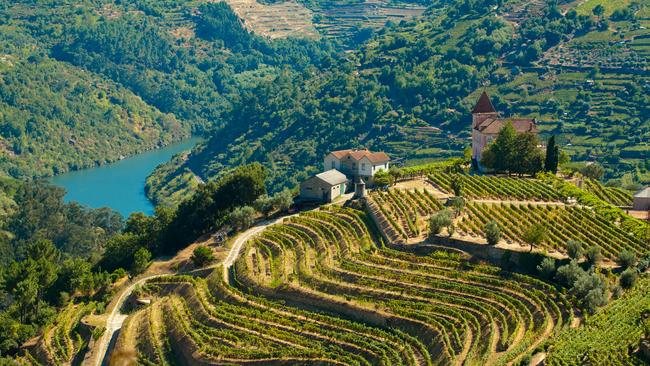
“This is the remedy for all the things that mess with your heart and your head,” says tour guide Barbara as we head back to our ship after an afternoon spent sampling the famed fortified wine crafted for centuries in Portugal’s Douro Valley. “If you’re sad, if your head hurts, if you can’t fall asleep because you worry about something, you have port. I don’t take pills. I just take port.”
We’re in Porto, the denouement of our nine-day Douro Delights cruise aboard an APT river ship, and I’m coming to understand why this “drink for the spirit”, as Barbara calls it – coaxed from steep, inhospitable terrain – inspires such devotion. UNESCO describes Portugal’s World Heritage-listed Alto Douro region, which has produced wines for about 2000 years, and in 1756 became the world’s first demarcated and regulated wine region, as a “diverse mosaic of crops, groves, watercourses, settlements and agricultural buildings, arranged as quintas (large estates) or casais (small landholdings)”. It praises those who tend the tightly terraced vines as “a multitude of anonymous artists” who have, over time, created “a collective work of land art”.
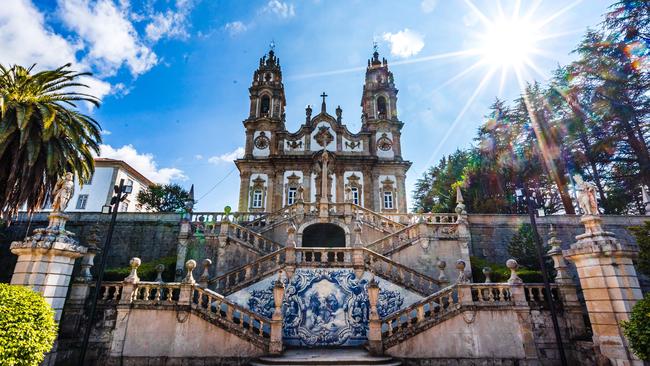
We’re sailing through the heart of this living masterpiece along the 200km-long Portuguese section of the Douro River, tracing the formerly treacherous route where rabelos (shallow-bottomed wooden boats) once shepherded barrels of the precious commodity over rapids, air pockets left inside for flotation should the boat come a cropper en route to Porto.
Our itinerary kicks off with a night in Madrid, before a coach ride to the ancient Spanish university town of Salamanca (see Page 28) and Vega de Torron near the Portuguese border before setting sail at a leisurely pace, stopping at ports such as Pinhao, Regua, and Entre-os-Rios, arriving in Porto for our final two nights. Launched in August last year, the 58-cabin MS Estrela has one of the largest pools on the Douro, and a spacious sundeck with plentiful seating. Menus cater to Australian tastes, with burgers, steaks and pizza alongside Portuguese-inspired offerings. Lighter options are offered in the lounge for those less inclined to a full breakfast or lunch (in warmer weather, barbecues also fire up on the top deck, but this doesn’t feature on our late-October sailing).
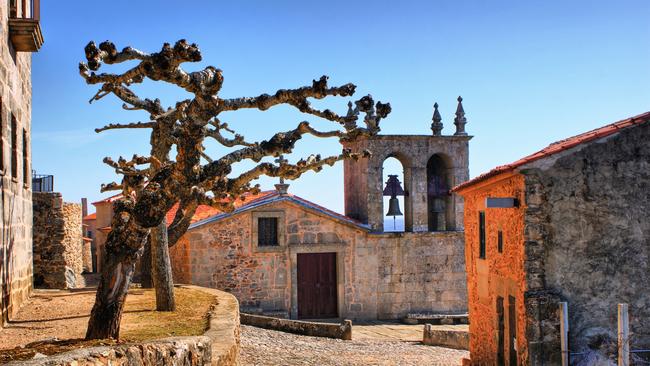
Onboard the ship MS Estrela
The ship’s cappuccino-coloured facade houses interiors inspired by the riverine landscape. Slender green palms liven up textural shades of beige, brown and blue in the lounge and bar, while staterooms feature earthy neutrals, woven pendant lights and polished, wooden-stump bedside tables to add character. My French balcony suite’s floor-to-ceiling window lowers halfway at the flick of a switch. With two comfy chairs and a small table, it’s a lovely spot to contemplate the rippling river and the flickering light it casts inside. Storage space is plentiful, and round wooden hooks in the entryway are perfect for grab ’n’ go jackets and scarves. A large mirror behind the TV enhances the sense of space, and the compact, stone-coloured bathroom has plenty of countertop real-estate.
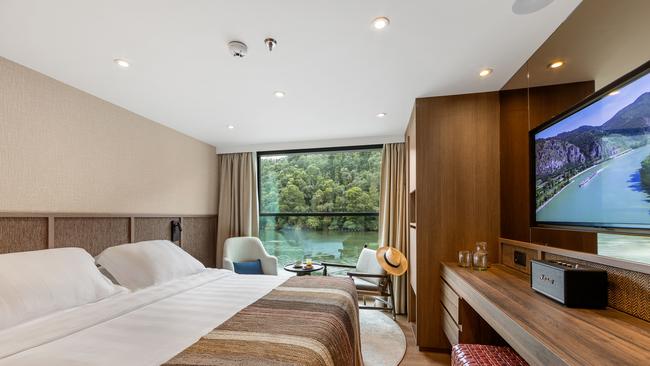
The main dining room takes inspiration from the valley’s bounty, with the chefs collecting fresh produce throughout the voyage, from fish to olive oil and citrus fruits. It’s very good overall, notwithstanding a couple of hiccups (waitstaff are quick to replace my very undercooked grouper fillet). Breakfast omelettes fly off the pass, complemented by Portuguese sausages and pastries. Lunches feature hearty specials, from Portuguese fish stew to Portuguese lamb pie, alongside crunchy, flavourful salads and freshly baked baguette sandwiches. Highlights include an appetiser of Asian-spiced duck, perfectly cooked; and a ballotine of tender free-range chicken, nicely herbed and bathed in ruby port wine jus (the chef includes port as an ingredient regularly).

Negronis, my aperitif of choice, hit the mark, and having cocktails included feels indulgent. The included Douro wines on offer at meals are very drinkable, and premium (extra-charge) options include a McLaren Vale shiraz alongside the likes of chablis and sancerre. While cheery bar staff are happy to guide wine choices upstairs, a sommelier at the downstairs restaurant could add further depth to the experience.
The Iberian-chic pool deck is a real drawcard, but due to up-and-down weather it’s largely quiet, save one sunny afternoon. The ship’s social hub is the bar and lounge, where we gather, cocktails in hand, for evening port talks and entertainment that ranges from a captivating harpist performance to a disco. The group is largely Australian, with Kiwis and Europeans in the mix, most of whom have travelled with APT before.
The forward deck is the place to be when we pass through one of five locks (Carrapatelo, with a water rise of 35m, is the deepest in Europe). At Pocinho we gather as the water is displaced beneath us and the monumental gates reveal the next stretch of river. It’s a disorienting delight.
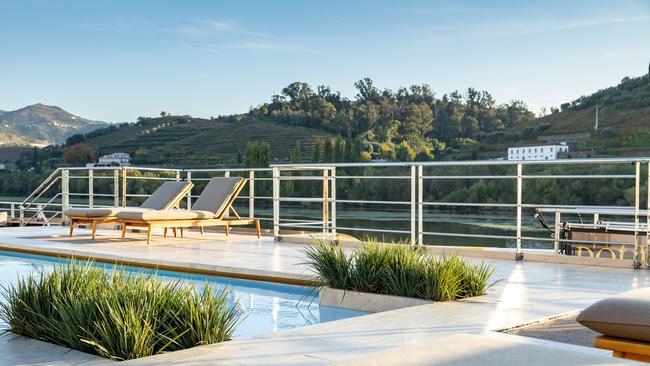
Day trips off the boat
Our excursions fill in the brushstrokes beautifully. Winding our way through scenic olive and almond groves near the Spanish border, guide Jesus shares the legend that these almond trees were planted by an Arabic king (Portugal was ruled by the Moors for about 500 years, beginning in the 8th century), whose Nordic wife was missing her homeland; their carpet of white blossoms gave the pining princess the illusion of snow. The crumbling-walled medieval hilltop village of Castelo Rodrigo is mist-ribboned and slick with rain, so while the views evade us, we’re cloaked in a romantic, history-laden air as we meander the cobblestoned streets. The village was a former refuge for Jews fleeing the Spanish Inquisition, who lived largely in harmony here with the Moors. Snacking on crunchy sugared almonds, I spend the ride back imagining these valleys resplendent with snow-white blossoms.
The tiny town of Pinhao’s diminutive 19th-century railway station is a beautiful window into the past, framed with blue and white tiled murals depicting terraced hillsides and hardworking labourers who used to carry up to 75kg of grapes. It also houses a cafe selling swoon-inducing pastel de nata; the wobbly-warm custard, dusted with cinnamon, oozes out of the crunchy pastry.
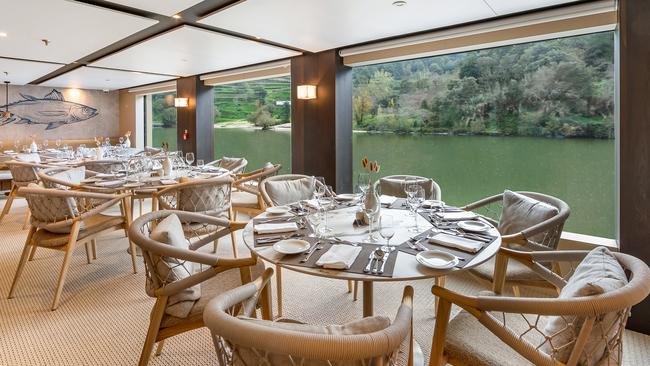
The itinerary
Our first port tasting is at a nearby Quinta de Sao Luiz, an estate that’s home to Kopke wines. The soil here is about 95 per cent shale, which stores rainwater deep beneath the vines (local weather consists of “nine months of winter and three months of hell”, says Jesus). Irrigation is prohibited, we’re told – it would reduce the sugar content of the small, sweet grapes – so the roots reach deep, sometimes over 20m into the earth for moisture, also helping to stabilise the steeply terraced terrain.
We settle in for a sampling (“Never taste at room temperature, please. You will first taste the alcohol,” warns our host), enjoying a 10-year-old white port with honeyed tropical notes.
The next day, cruise director Maria explains that as you climb the 686 steps leading to Lamego’s Sanctuary of our Lady of Remedies church – a hilltop hotspot for pilgrims since the 18th century – you shed your sins with each one; when you reach the summit, you’re closer to God. Unfortunately for our souls, we’re kindly deposited by coach at the top to admire the church before commencing our descent. I wonder, ogling the tiled terraces, sweeping panoramic views and lush encroaching greenery, if this means we’re accumulating sins with each downward step; redemption in reverse, perhaps.

Our first of two APT Signature Experiences affirms my suspicions, with a lively private feast among the barrels at the atmospheric Quinta da Pacheca. First, we congregate in the 18th-century cellar for some background: they still foot-tread their grapes, a common process in the region that leads, says Pacheca’s Hugo Amaral, to wines with more complexity and structure, with higher potential ageing in the bottle. They also avoid crushing the seeds this way, along with “the bitterness and bad acidity” they can bring. I nab a 2019 late harvest, a bottle of sunshine gold to stow away home.
The port of Entre-Os-Rios is our gateway to Quinta da Aveleda, a fairytale-feeling, ivy-covered estate peppered with azaleas, rhododendrons and hydrangeas – and some adorable baby goats. We’ve crossed into the Vinho Verde wine region (Portugal has 14 in total), its “green wines” named for the verdant environs. We meander through the cobwebbed cellar before tasting drops, including a delightful alvarinho with zesty notes of green apple, lemon and pineapple.
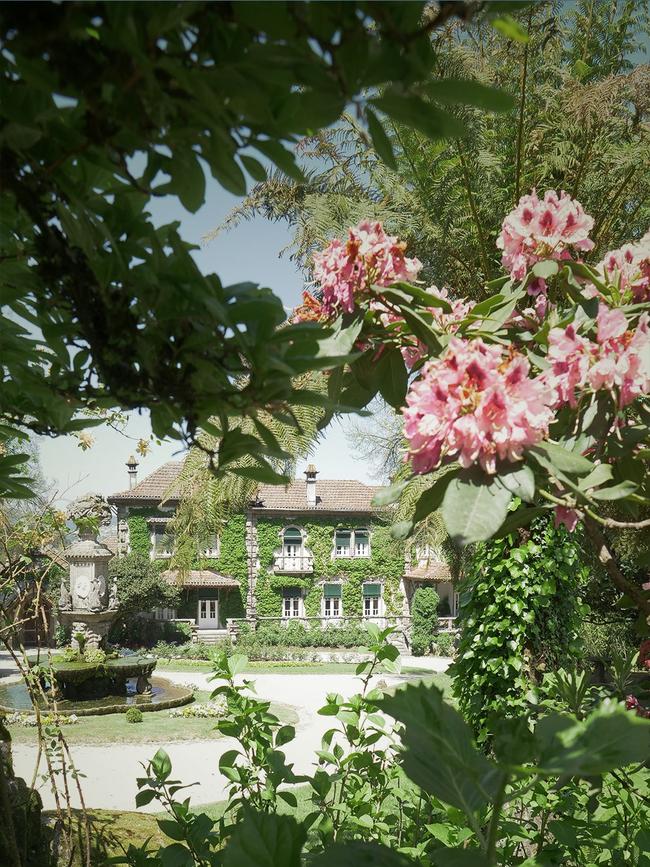
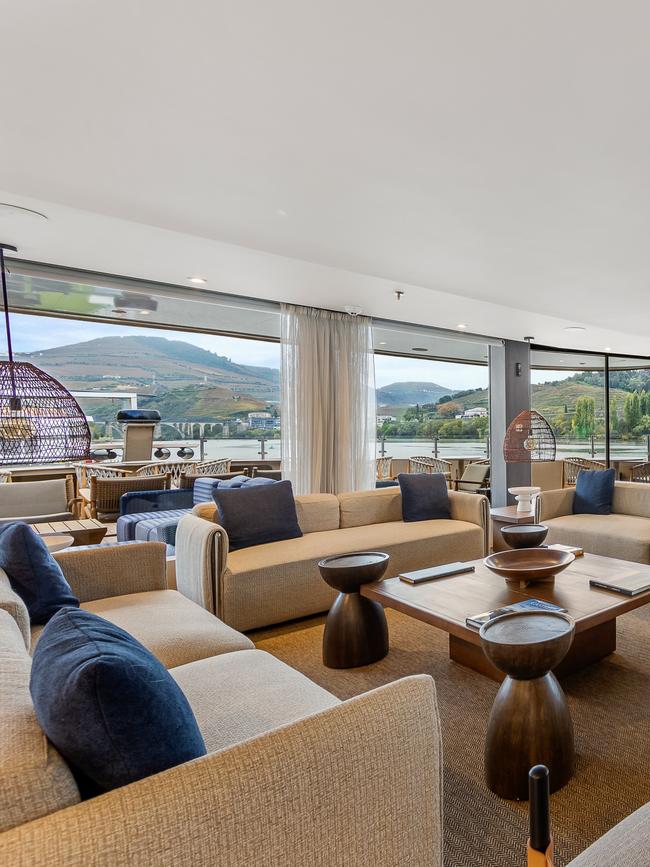
Our approach into Porto is a leisurely pleasure, with humble jetties and houses clustered in shades of buttermilk and ochre giving way to densely populated banks and riverside buildings in saturated sunset hues. It’s a glorious day as we dock near the mouth of the Atlantic at Vila Nova de Gaia, a short drive over the river to the city centre of Porto.
At Taylor’s Port cellars, we learn Porto’s proximity to the ocean provides the perfect humidity and temperature for ageing the ports transported from the upper reaches of the Douro, and that some vintage ports are aged in the bottle for up to 100 years. “Because they are in the bottle, they have a more poetic side,” explains our guide, who advises they must be enjoyed hastily upon opening, whereas other ports can last much longer.
From the cable car, we watch the hilly city’s colourful beauty rise and fall beneath us, like some great, breathing being. It’s rare to be able to so fully trace a line from seed to grape; barrel to bottle; yesteryear to today. But that’s just another of the Douro’s quiet treasures.
In the know
APT’s nine-day Douro Delights itinerary runs between May and October; from $7295 a person, twin-share, a saving of $2200 a couple. Includes meals and standard beverages, such as wine, spirits and beer. Book by November 30.
Nikki Wallman was a guest of APT.
If you love to travel, sign up to our free weekly Travel + Luxury newsletter here.


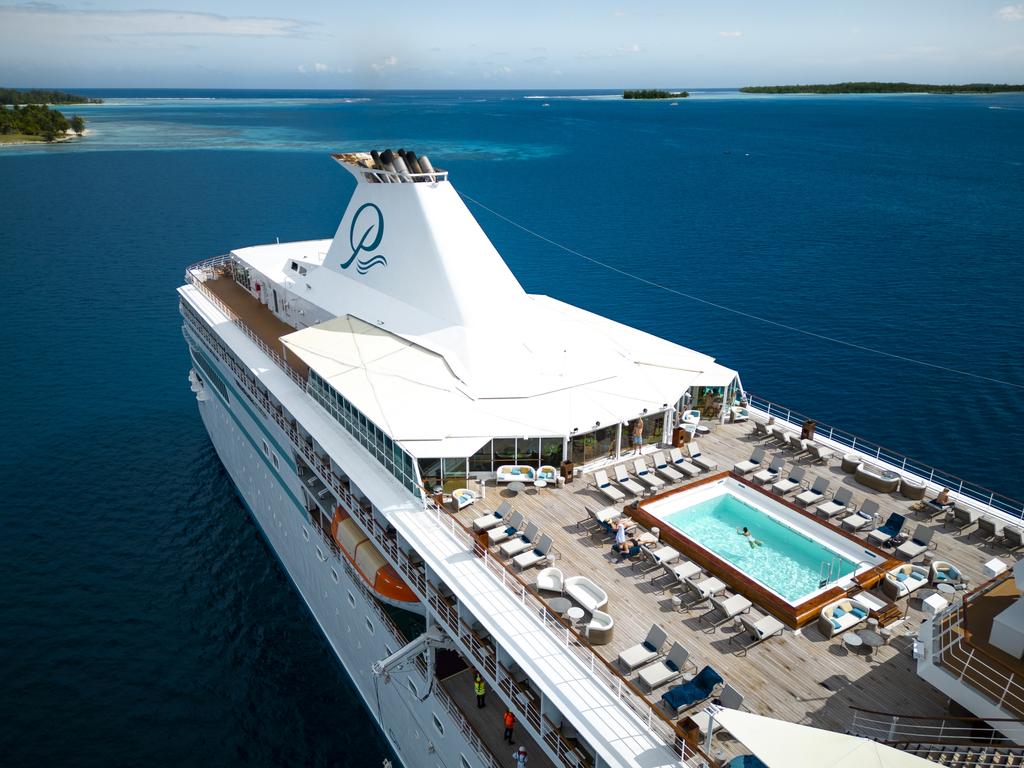

To join the conversation, please log in. Don't have an account? Register
Join the conversation, you are commenting as Logout